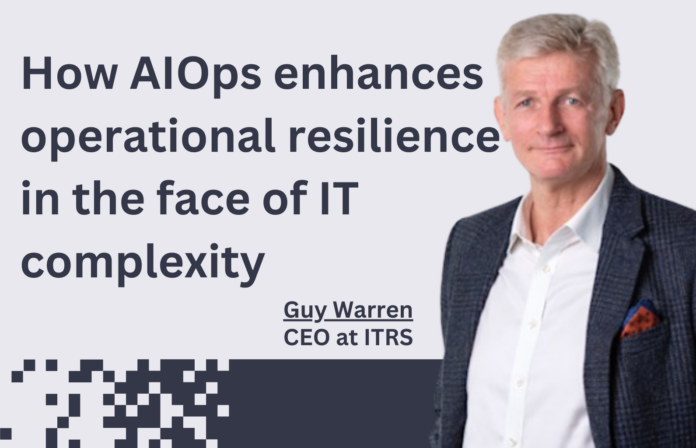
As IT estates become more complex, AIOps and observability tools can equip IT professionals to strengthen the resilience and security of their operations. Guy Warren, CEO at ITRS discusses the challenges firms face with monitoring diverse IT estates and AIOps’ vital role in overcoming them.
The need to deliver resilient business services is increasing demand for reliable, high-performing IT operations. At the same time, organizations are diversifying their IT estates to include public, private, and hybrid cloud environments, alongside microservices and third-party integrations. This complexity is making it more difficult to maintain an accurate picture of IT infrastructure, drive operational efficiency, and catch emerging issues before they compromise business services.
This is where AIOps — Artificial Intelligence for IT Operations — comes into play.
AIOps capabilities can leverage machine learning to rapidly process vast amounts of IT monitoring data, making it possible to detect anomalies and trends that might otherwise go unnoticed.
The AIOps market is expected to grow at a compound annual growth rate of 17.4% between now and 2030, driven by businesses’ need for efficiency and agility. With 93% of organizations already investing or planning to invest in AIOps, what IT monitoring challenges is it helping to address and how does it benefit business resilience?
Tackle ITOps’ infamous alert fatigue
Disparate workflows, a mix of different tools, and siloed data generated from diverse IT estates cause a lot of noise — a.k.a. alert storms — and make it hard to distinguish between benign performance fluctuations and emerging critical issues. The vast quantity of low-priority alerts monitoring solutions often deliver can distract you from the problems that could have business impact.
For example, unexplained spikes in outbound or inbound network traffic can be a symptom of a Distributed Denial of Service (DDoS) attack or data exfiltration attempts, while frequent reboots could be caused by malware tampering with IT infrastructure.
AIOps analyses and classifies alert streams, helping to filter out irrelevant data and low-priority notifications. As a result, you can better identify and prioritize problems, allowing you to concentrate on critical issues. What’s more, AIOps can group related alerts to deliver more contextualized and detailed insight. With a fuller understanding, you can connect the dots between operational issues and security risks, improving response time and driving more efficient remediation across functions.
Advance anomaly and threat detection
Large-scale IT environments consist of many components and each component logs substantial rows of data. Catching anomalies within this data can be like trying to find a needle in a haystack.
AIOps uses machine learning to analyze expected behavior patterns and more accurately pinpoint problematic deviations from the norm. Surges in resource consumption, such as CPU and memory, could well be driven by legitimate or scheduled tasks and be addressed with resource optimization. But they might also be the sign of a malware infection or compromised servers running unauthorized processes.
Thanks to AIOps, you can rely on rapid analysis and precise anomaly detection, giving you advanced warning of issues before they escalate into serious incidents. The ability to mitigate potential risks long before they cause outages and disruption is imperative to safeguarding your operational resilience, security, and the performance of your business services.
Proactive monitoring is great; pre-emptive action is even better
Precise anomaly detection lets you stay on top of emerging issues, but AIOps takes this even further so you can anticipate future concerns. By storing relevant monitoring data and combining it with robust analytics, you can run historical analysis and forecast trends.
With these predictive capabilities, you can foresee upticks in key metrics, such as with resource consumption. This informs pre-emptive resource adjustments, letting you mitigate the risk of potential outages as well as drive cost efficiencies.
Using predictive analytics to continuously analyze your IT environments and resource usage better enables you to right-size your IT estate. This reduces your attack surface and minimizes unnecessary exposure, letting you switch off underutilized resources or services that present a potential vulnerability or entry point for cyberattacks.
Managing extensive and complex IT estates requires the capacity to withstand and respond quickly to issues. When customers expect nothing short of excellence for the business services they depend on, resilience is non-negotiable.
The rise of AIOps provides organizations with valuable capabilities for maintaining infrastructure performance, averting the risk of outages, and recovering quickly from disruptions. By leveraging machine learning, AIOps enables you to progress from reactive problem-solving to pre-emptive action that strengthens resilience, ensuring your business continues to operate smoothly and securely.
Ad
